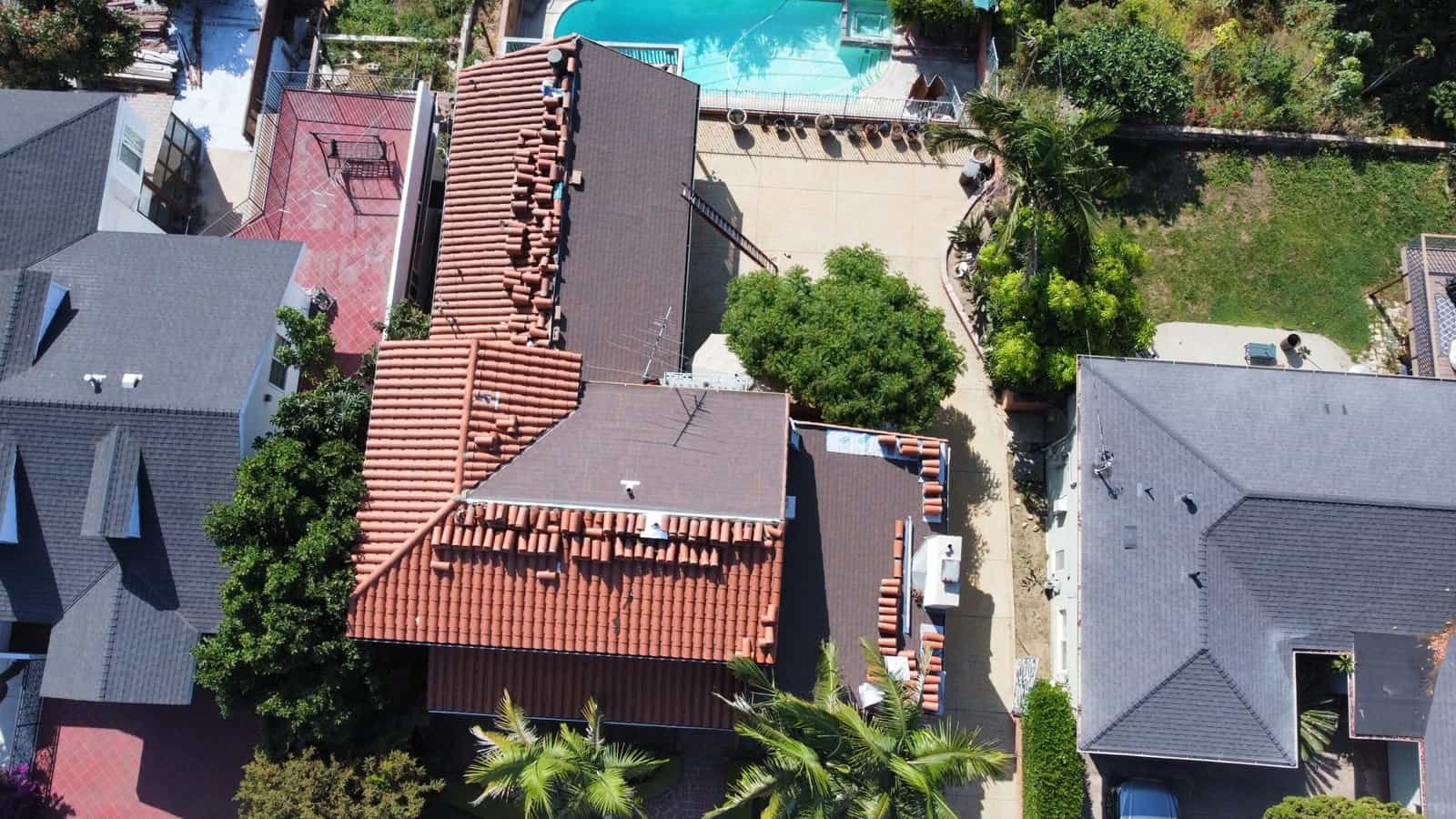At Golden Coast Roofing, we’re experts in all things related to roofs, including installing, fixing, and keeping them in good shape. Our experienced team is dedicated to giving our customers the best service possible. We know your roof is really important because it keeps you, your family, and your stuff safe from bad weather.
Table of Contents
ToggleAn important part of your roof is the underlayment, which is a layer that goes under the tiles and protects the roof underneath. In this blog post, we’re going to talk more about tile roof underlayment replacement cost and explain how the cost to replace it can change depending on different things.
Let’s dive into this topic to help you keep your roof strong and lasting.
Understanding Tile Roof Underlayment
Tile roof underlayment is a waterproof barrier that prevents moisture and heat from penetrating the roof deck. It is typically made from a variety of materials, including asphalt-saturated felt, rubberized asphalt, and synthetic membranes. Each type of underlayment has its unique characteristics, such as thickness, weight, and resistance to tearing and punctures.
The lifespan of typical tile roof underlayments depends on several factors, such as climate, exposure to sunlight, and the quality of the installation. For example, in a hot and humid climate, the underlayment may deteriorate faster due to the moisture and heat. Some underlayments can last up to 20-30 years, while others require replacement every 10-15 years.

Signs That Indicate the Need for Underlayment Replacement
Several signs indicate that it’s time to replace the tile roof underlayment:
- Roof Leaks: If you notice water stains on your ceilings or walls, it could be a sign that your underlayment is failing and allowing water to seep into your home.
- Missing or Damaged Shingles: Shingles that are missing or damaged can lead to underlayment exposure, accelerating its wear and tear.
- Age of the Roof: If your roof is nearing or has surpassed its expected service life (typically 20-30 years), the underlayment may need replacement.
- Granules in Gutters: If you find excessive granules in your gutters, it’s a sign that the protective layer of the shingle is wearing off, which may indicate underlayment deterioration.
- Visible Underlayment: If you can see the underlayment through missing or broken tiles, it’s a clear sign of damage that may require replacement.
- Sagging Roof Deck: If you notice a dip or sag in your roof deck, it could be a sign of a more serious problem, like a failing underlayment.
Factors Affecting Tile Roof Underlayment Replacement Cost
Tile roof underlayment replacement cost can vary based on several factors:
- Material of Underlayment: Different materials come with different costs. Synthetic membranes tend to be more expensive than traditional asphalt-saturated felt. The chosen material also affects the lifespan of the underlayment, potentially impacting long-term costs.
- Size and Complexity of the Roof: Larger roofs or roofs with complex designs and multiple angles or levels typically require more materials and labor, increasing the overall cost.
- Labor Costs: These are influenced by the region where you live and the experience level of the roofing contractor. Experienced contractors may charge more, but their expertise can ensure a quality job.
- Removal of Old Underlayment: This involves labor and disposal costs. If the existing underlayment has severely deteriorated or there are multiple layers to remove, the costs can increase.
- Local Permit and Inspection Fees: Some localities require permits and inspections for roofing work, which can add to the overall cost.
- Additional Repairs: If there’s damage to the roof deck or other components that require repair during the underlayment replacement, this will also increase the cost.

Conclusion
In summary, the underlayment is a key element in ensuring your tile roof remains durable and serves you well for years. While the cost of replacement can vary depending on several factors, it’s crucial to not delay this task. Timely replacement can save you from costly future repairs and potential damage to your home.
At Golden Coast Roofing, our skilled and experienced team is ready to handle your underlayment replacement with precision, ensuring your roof’s safety and longevity. Reach out to us for a comprehensive estimate on tile roof underlayment replacement cost, and take the first step towards securing a reliably protected roof.
Frequently Asked Questions
What is the primary function of tile roof underlayment?
The primary function of tile roof underlayment is to act as a waterproof barrier, protecting the roof structure from water damage and leakage.
What are the signs that tile roof underlayment needs to be replaced?
Signs that you need to replace your tile roof underlayment include water spots or leaks on your ceiling or in the attic, tiles that are broken, bent, or missing, and if the underlayment looks old, torn, or has mold on it.
How does weather and climate affect the lifespan of tile roof underlayment?
The lifespan of tile roof underlayment is affected by the weather and climate. Hot or cold temperatures, lots of rain or snow, and strong winds can make it wear out faster, while it tends to last longer in places with gentler weather.

